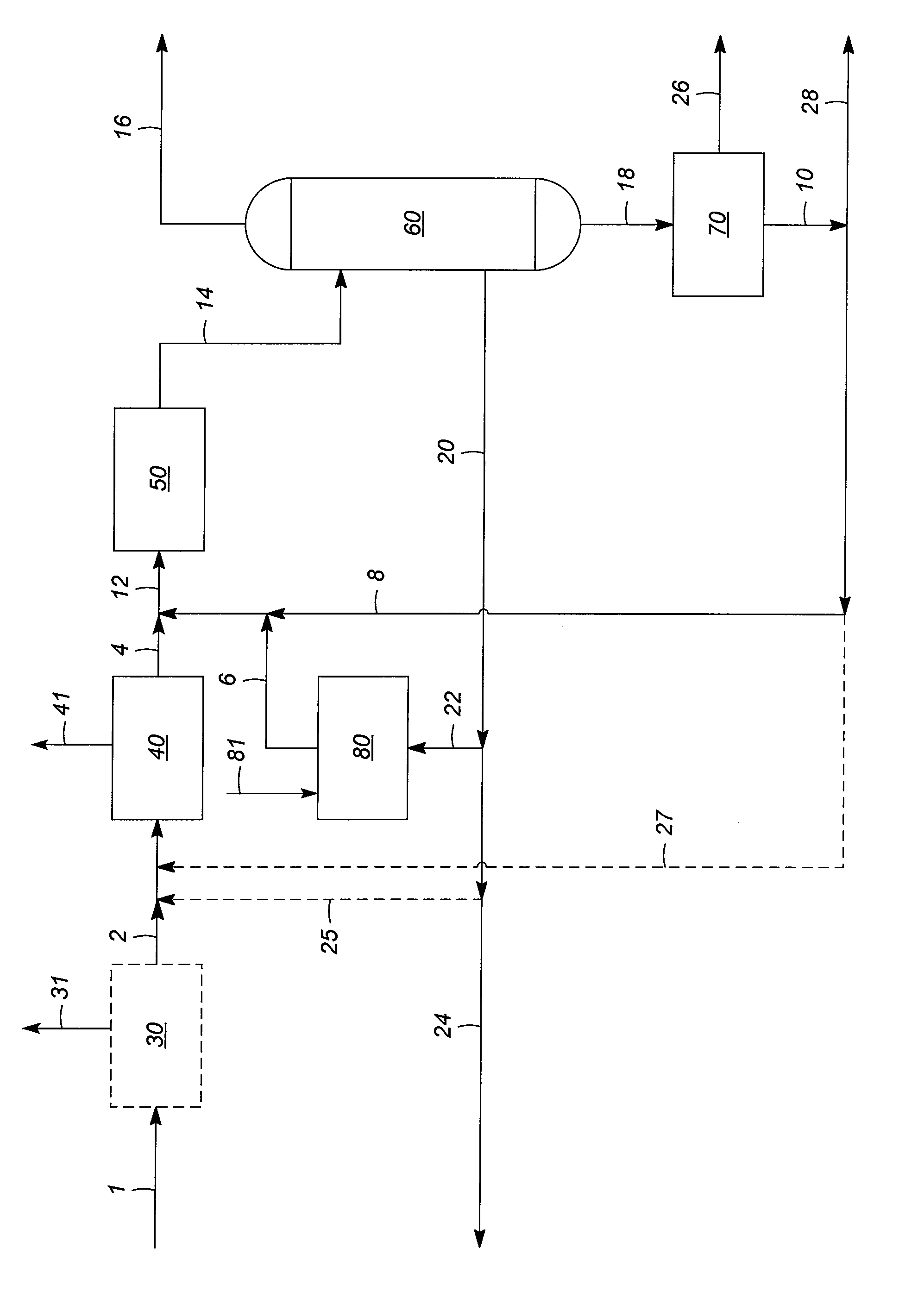Production of light olefins and aromatics
a technology of light olefins and aromatics, which is applied in the direction of hydrocarbon oil treatment products, organic chemistry, chemical apparatus and processes, etc., can solve the problems of outpacing the capacity of these conventional processes, the complex combination of reaction and gas recovery systems of the ethylene plant, and the inability to meet the demand for ethylene and propylene, so as to optimize the overall product value and high propylene:ethylene molar ratio
- Summary
- Abstract
- Description
- Claims
- Application Information
AI Technical Summary
Benefits of technology
Problems solved by technology
Method used
Image
Examples
example 1
[0035]Computerized yield estimating models were used to predict product yields obtained from the process flow schemes depicted in FIG. 1, both without (Case 1) and with (Case 2) upstream reforming of a model naphtha feedstock. The dehydrogenation zone was modeled based on pilot plant results obtained using a zirconia-based catalyst. The product yields were compared to a reference technology, namely catalytic naphtha cracking (Case 3), which does not generate aromatic hydrocarbons. The naphtha feed rate chosen as a basis for each simulation was 2,100 metric tons per year. Product hydrocarbon yields are summarized below in Table 1.
TABLE 1Estimated Yields based in 2,100 MTA Naphtha FeedCase 1, NoCase 2, UpstreamCase 3,ReformingReformingReferenceMass %Mass %Mass %Hydrogen3.323.821.56Methane2.462.778.51Ethane2.413.093.60Ethylene12.2612.3234.55Propane2.253.68Propylene50.3844.6837.42C4s2.460.390.00Light Naphtha3.700.720.00Benzene4.869.50Toluene6.189.18Xylene5.436.11Heavies Purge4.293.73Ref...
PUM
| Property | Measurement | Unit |
|---|---|---|
| bed temperature | aaaaa | aaaaa |
| absolute pressure | aaaaa | aaaaa |
| inlet temperature | aaaaa | aaaaa |
Abstract
Description
Claims
Application Information
 Login to View More
Login to View More - R&D
- Intellectual Property
- Life Sciences
- Materials
- Tech Scout
- Unparalleled Data Quality
- Higher Quality Content
- 60% Fewer Hallucinations
Browse by: Latest US Patents, China's latest patents, Technical Efficacy Thesaurus, Application Domain, Technology Topic, Popular Technical Reports.
© 2025 PatSnap. All rights reserved.Legal|Privacy policy|Modern Slavery Act Transparency Statement|Sitemap|About US| Contact US: help@patsnap.com

